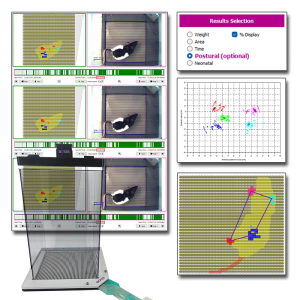Authors
YM Lee, E Son, D-S Kim
Lab
Herbal Medicine Research Division, Korea Institute of Oriental Medicine, 1672 Yuseong-daero, Yuseong-gu, Daejeon 34054, Korea
Journal
Plants
Abstract
Sam-Myo-Whan (SMW) has been used in Korean and Chinese traditional medicine to help treat gout, by reducing swelling and inflammation and relieving pain. This study compared the effects of SMW extracted by using different solvents, water (SMWW) and 30% EtOH (SMWE), in the treatment of gouty arthritis. To this end, we analyzed the main components of SMWW and SMWE, using high-performance liquid chromatography (HPLC). Anti-hyperuricemic activity was evaluated by measuring serum uric acid levels in hyperuricemic rats. The effects of SMWW and SMWE on swelling, pain, and inflammation in gouty arthritis were investigated by measuring affected limb swelling and weight-bearing, as well as by enzyme-linked immunosorbent assays, to assess the levels of proinflammatory cytokines and myeloperoxidase (MPO). In potassium oxonate (PO)-induced hyperuricemic rats, SMWW and SMWE both significantly decreased serum uric acid to similar levels. In monosodium urate (MSU)-induced gouty arthritis mice, SMWE more efficiently decreased paw swelling and attenuated joint pain compare to SMWW. Moreover, SMWE and SMWW suppressed the level of inflammation by downregulating proinflammatory cytokines (interleukin-1b, tumor necrosis factor-a, and interleukin-6) and MPO activity. HPLC analysis further revealed that berberine represented one of the major active ingredients demonstrating the greatest change in concentration between SMWW and SMWE. Our data demonstrate that SMWE retains a more effective therapeutic concentration compared to SMWW, in a mouse model of gouty arthritis.
BIOSEB Instruments Used
Dynamic Weight Bearing 2.0 (BIO-DWB-DUAL)
Source :

 Pain - Thermal Allodynia / Hyperalgesia
Pain - Thermal Allodynia / Hyperalgesia Pain - Spontaneous Pain - Postural Deficit
Pain - Spontaneous Pain - Postural Deficit Pain - Mechanical Allodynia / Hyperalgesia
Pain - Mechanical Allodynia / Hyperalgesia Learning/Memory - Attention - Addiction
Learning/Memory - Attention - Addiction Physiology & Respiratory Research
Physiology & Respiratory Research











![Dynamic Weight Bearing 2.0 – Postural Module [Add-on]](https://bioseb.com/733-home_default/dynamic-weight-bearing-20-add-on-postural-module.jpg)
























 Pain
Pain Central Nervous System (CNS)
Central Nervous System (CNS) Neurodegeneration
Neurodegeneration Sensory system
Sensory system Motor control
Motor control Mood Disorders
Mood Disorders Other disorders
Other disorders Muscular system
Muscular system Joints
Joints Metabolism
Metabolism Cross-disciplinary subjects
Cross-disciplinary subjects CONFERENCES & MEETINGS
CONFERENCES & MEETINGS 
